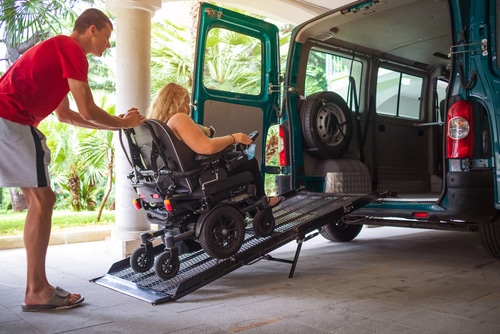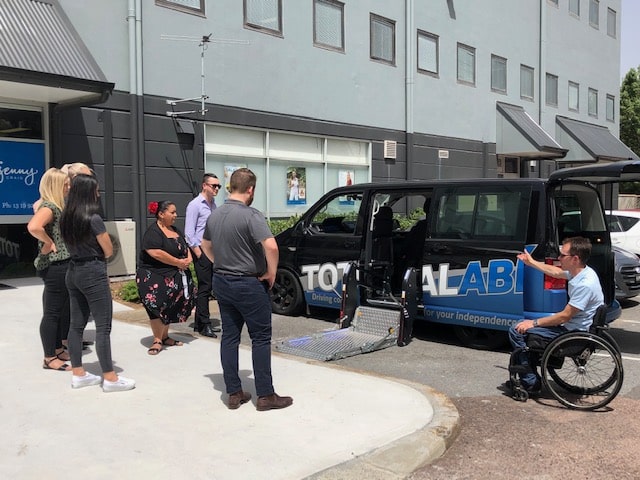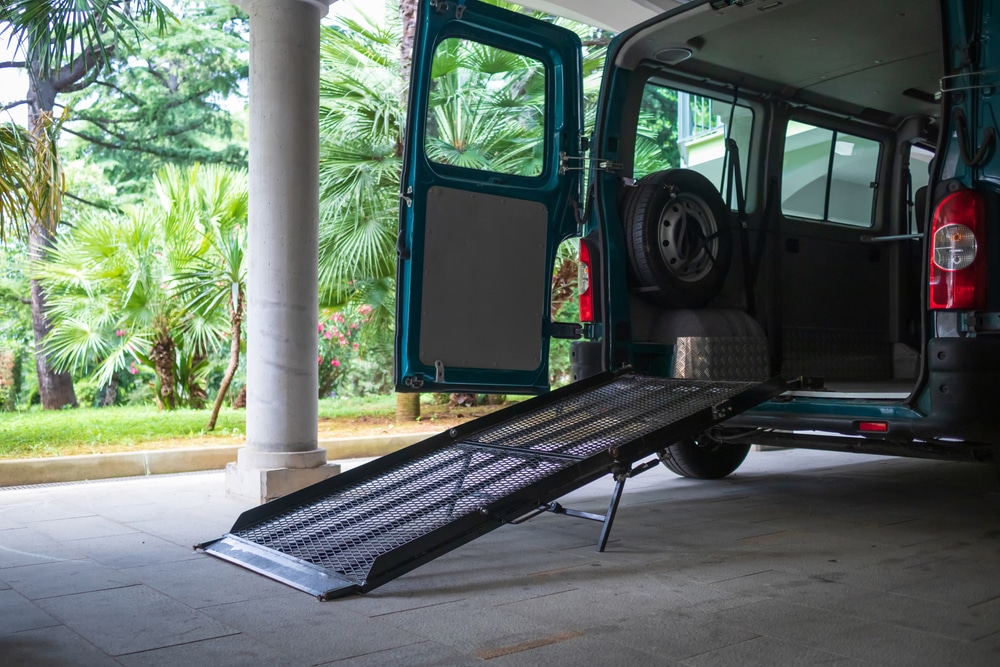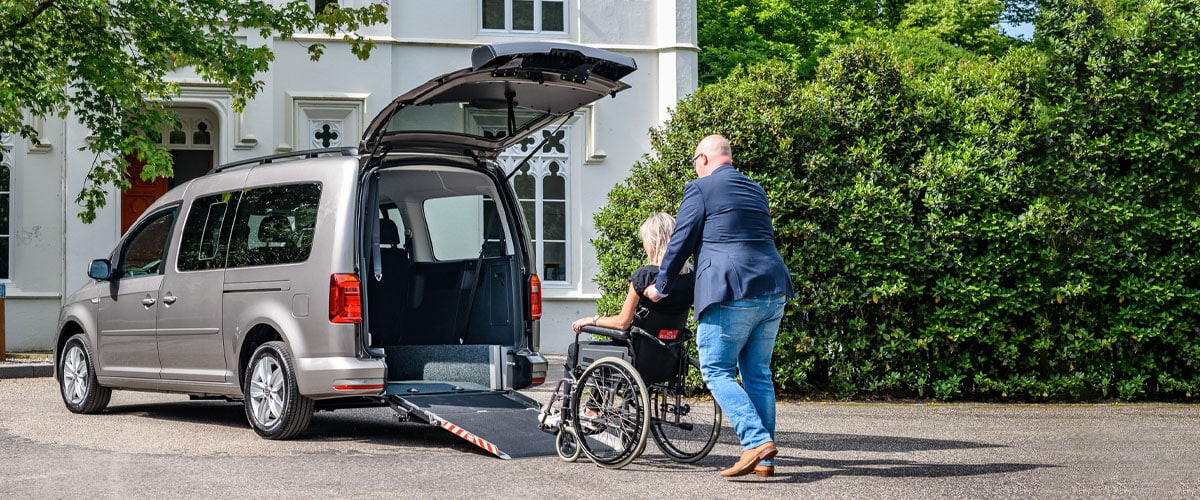Is it time to buy a new wheelchair accessible vehicle (WAV)? When searching for a vehicle that fits your needs you may come across the option of imported wheelchair accessible vehicles. Imported WAVs tend to be more affordable than converting a car locally because of their manufacturing. That’s because costs can increase quite drastically once a base vehicle and conversion work are quoted.
But are they too good to be true?
In this article, Blue Badge Insurance takes you through some key considerations when potentially choosing and buying imported wheelchair accessible vehicles.
In this article

The crux of an offshore WAV purchase
As you know, a WAV is a vehicle that’s been fully designed and manufactured to allow wheelchair access.
With the often-lower cost involved in going offshore, at first this purchase pathway might seem to be too good to pass up. Given it’s a big, life-changing purchase, it’s crucial to know all the pros, cons and other considerations so you can make an informed decision.
Buying something sight unseen is daunting enough with appliances and other key household items – let alone a vehicle that will keep you moving on a daily basis.
Here are some important factors to keep in mind.
What features do imported WAVs have?
Imported wheelchair vehicles, also known as grey import WAVs, offer many of the same benefits as cars locally converted. They’re available in a range of models available to Australian buyers, allowing you to choose the accessibility, size, appearance and price that’s ideal for your needs.
Common features include ramps, lifts and hoists. Read more about one of the most popular imported WAVs, the Toyota Hiace Welcab, in our article on grey import WAVs.
Will this vehicle meet Australian standards?
If you’re considering buying an imported wheelchair accessible vehicle, it’s vital that you check whether the car is fully compliant with all Australian standards (the vehicle and its modifications). Otherwise, you may not be able to register or drive your new car.
We recommend you choose an importer that’s registered under the Registered Automotive Workshop Scheme (RAWS). They can ensure that your vehicle meets Australian Design Rules’ compliance and safety procedures.

Speak to your occupational therapist before buying
It’s important for you to discuss the suitability of an imported WAV versus a locally converted WAV with your occupational therapist as well as various suppliers. You want to ensure you get the car that’s best suited to your unique needs and your lifestyle.
It’s also important to remember that while imported WAVs have been built for wheelchair access, many people still require additional modifications to be made to ensure they’re suitable for their requirements.
Five steps to buy an imported wheelchair vehicle
If you’ve decided you’d like to purchase an imported WAV, the below steps will provide some guidance. Bear in mind that the costs associated with importing a WAV can vary widely depending on factors such as its size, condition, shipping distance, taxes, duties and any required modifications.
However, you can expect to pay at least a few thousand dollars. It’s best to consult with a customs broker or import specialist for accurate cost estimates based on your specific situation.
Here are five of the key steps you need to take when buying an imported wheelchair vehicle:
1. Find a WAV that meets your needs
There are a number of imported wheelchair vehicles available to Australians, so you’ll need to do some research to find one that meets your specific needs. Consider factors such as its size, the type of wheelchair restraint you need and the features that are important to you.
Trawl the internet for available vehicles, talk to WAV owners on forums, speak with industry people in person, read online reviews to get a fuller picture, and so on.
2. Choose an importer
As mentioned, you need to choose an importer who’s experienced in imported wheelchair vehicles who can ensure that it meets all Australian standards. In particular, ask them about their process for ensuring compliance with Australian standards.
Ask them all the questions you have, make sure you get all the detail in their answers that you need then ask them if there is anything else you should know.
3. Obtain the required documentation
The following documentation will be required to import a WAV into Australia:*
- Roadworthiness certificate from the country of export
- Bill of sale
- Certificate of origin
- Customs import declaration
- Compliance certificate from a Registered Automotive Workshop

4. Pay the import duties and taxes
The import duties and taxes you’ll need to pay will vary depending on the value of the vehicle and the country of origin. You can find more information about import duties and taxes on the Australian Taxation Office website.
5. Register the vehicle
Once your WAV has arrived in Australia then you’ll need to register it with the Department of Transport. You can find more information about registering a vehicle on their website.
Here are some additional costs you may need to consider when importing a WAV into Australia:
- Freight costs
- Insurance costs
- Modifying the vehicle to meet Australian standards
- Registration fees
How are these cars imported?
These wheelchair accessible vehicles are imported into Australia under the Specialist and Enthusiast Vehicle Scheme. The scheme is used to cover car clubs and sports cars as well as WAVs.
This means you and your importer must make sure that all disability-specific safety requirements are met. For instance, wheelchair restraints must be classified as safe to transport passengers, not just cargo.

Learn more about imported wheelchair vehicles
You can learn more about imported wheelchair accessible vehicles and locally converted wheelchair accessible vehicles in our A-Z guide on disability converted vehicles. This FREE guide contains everything you need to know about buying, owning and maintaining a disability converted vehicle.
Want to know even more? Here are some must-read blog pieces on wheelchair accessible vehicles:
- Things You Need to Know About Wheelchair Accessible Vehicles
- Imported and Second Hand Wheelchair Accessible Vehicles: Yay or Nay?
- Wheelchair Accessible Vehicle Rental in Australia
- Can You Cover Disability Modified Cars with Insurance?
- Wheelchair Accessible Vehicle Ramp Facts
- The Difference Between Wheelchair Accessible Vehicles and Converted Cars
- 15 Wheelchair Accessible Vehicle Hire Options
- Features to Look for When Buying a Converted Car or Wheelchair Accessible Vehicle
Car insurance for imported wheelchair vehicles
Whether imported or not, a wheelchair accessible vehicle is a big investment that needs to be well protected. The lengthy process of getting your WAV suited to you is another reason you won’t want to be without it for any length of time.
Luckily you can get specialist car insurance for wheelchair accessible vehicles and converted cars with Blue Badge Insurance. Your plan covers vehicle repair and replacement if your car is damaged or stolen. It also covers the listed assistive technology that you travel with.
Contact us today to find out about getting up to 25% off as a disability parking permit holder. Or simply click below to start your quote.
*Correct at the time of writing. Remember that documentation requirements are subject to change, so always do your own research before you embark on purchasing your WAV.








